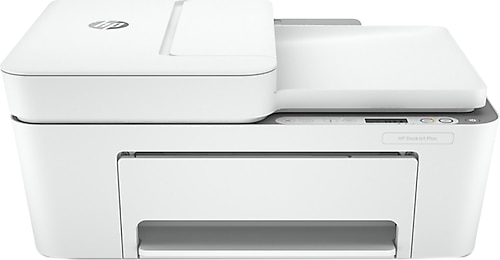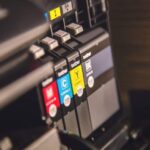How to Optimize Your HP Printer for Cost-Efficient Printing
Printing can quickly become an expensive operation, especially for small businesses and households that rely heavily on their printers. Luckily, there are several ways to optimize your HP printer for cost-efficient printing without compromising quality. By following some simple tips and making a few adjustments to your printer settings, you can reduce ink or toner consumption, lower printing costs, and increase the lifespan of your device. Here’s how to get started:
1. Enable Draft Mode or Economical Printing
One of the easiest ways to cut costs on ink or toner is by switching your printer to draft mode or economical printing settings. These settings are designed to reduce ink consumption while still producing readable prints. The draft mode uses less ink by lowering the resolution of the print job, which is perfectly acceptable for documents like internal memos, drafts, or general notes.
- How to Enable Draft Mode:
- On Windows, go to your printer settings and select the Draft or Economy mode in the Print Quality section.
- On macOS, select the Low Quality option under Print Settings.
This simple adjustment can result in significant savings over time, especially if you print many documents that don’t require high-quality resolution.
2. Use HP Instant Ink Subscription
For inkjet printers, one of the best ways to save money on ink is by signing up for HP Instant Ink. This subscription service automatically sends you new ink cartridges when your printer detects that you are running low, and it offers flexible plans based on how many pages you print each month.
- Benefits of HP Instant Ink:
- Cost savings on ink with plans starting as low as $1.99 per month.
- You pay only for the pages you print, not the ink, and unused pages roll over.
- Convenience of automatic cartridge delivery before you run out of ink.
By using Instant Ink, you can ensure that you’re paying the most competitive price for your ink usage without worrying about running out during important print jobs.

3. Print in Black and White When Possible
Printing in black and white instead of color can significantly reduce your printing costs, as color ink is typically more expensive. If your documents don’t require color for clarity, always choose black and white or grayscale printing.
- How to Set Default Black and White Printing:
- On Windows, go to Printer Preferences and select Black and White under Color Options.
- On macOS, select Black & White in the Print Settings before printing.
By defaulting to black-and-white printing, you can cut down on the consumption of color cartridges and significantly lower your overall printing costs.
4. Use the Right Paper for Printing
The type of paper you use can also impact your printing costs. Standard copier paper is usually sufficient for most everyday printing tasks. If you’re using specialty papers like glossy or photo paper, the printer will use more ink to ensure quality results, which can lead to higher costs.
- Tips for Paper Selection:
- Use standard printer paper for everyday printing to reduce costs.
- Reserve specialty papers for prints that truly require high-quality resolution, such as photos or presentations.
Using the appropriate paper can help reduce ink waste and optimize the efficiency of your HP printer.
5. Optimize Printer Settings for Double-Sided Printing
Double-sided printing (duplex printing) is a great way to reduce paper consumption, which in turn helps save money. HP printers allow you to print on both sides of the paper, effectively halving your paper usage.
- How to Enable Duplex Printing:
- On Windows, go to Printer Properties and enable Double-Sided Printing under the Layout tab.
- On macOS, select Two-Sided printing in the Print Settings before printing.
By utilizing duplex printing, you’re not only saving on paper, but you’re also contributing to a more sustainable and eco-friendly printing routine.
6. Regularly Maintain Your Printer
Maintaining your printer is essential to ensure it runs efficiently and lasts longer. Regular maintenance can help avoid issues that might lead to waste, such as clogged nozzles or uneven printing that wastes ink or toner.
- Routine Printer Maintenance:
- Clean your printhead regularly to prevent ink blockages.
- Perform regular printhead alignment and nozzle checks to ensure your printer is operating at its best.
- Keep your printer clean and dust-free to avoid issues with paper feeding and toner distribution.
Proper maintenance can help extend the life of your printer and reduce the need for repairs or early replacements, ultimately lowering your overall costs.
7. Set Print Limits or Restrict Color Printing
If you have a shared printer in an office environment, setting print limits or restricting access to color printing can be a great way to minimize unnecessary costs. You can set quotas on the number of pages each employee can print, or you can restrict access to color printing unless absolutely necessary.
- How to Set Print Limits:
- Use the HP Web Jetadmin software to manage print settings across a network.
- Set color printing restrictions and monitor the usage of color ink cartridges.
This method is particularly useful in office settings where controlling printing habits can lead to significant savings.
8. Consider a Laser Printer for High-Volume Printing
For small businesses that have a high volume of printing, switching to a laser printer might be a more cost-effective solution. Laser printers are typically more efficient in the long run, with a lower cost per page compared to inkjet printers. Additionally, they generally require less maintenance and offer faster printing speeds.
- Laser Printer Benefits:
- Lower cost per page for high-volume printing.
- Faster printing speeds for large print jobs.
- Less ink consumption compared to inkjet printers.
If your business prints large volumes of documents regularly, investing in a HP LaserJet printer could save you more in the long term.
9. Use Printer Economically
In addition to printer settings, consider the overall frequency of your printing tasks. Print only what’s necessary, and avoid excessive or unnecessary printing. Going digital wherever possible—such as by using PDFs and sharing documents electronically—can help you cut down on print volume and, by extension, reduce costs.
- Tips for Efficient Printing:
- Print only essential documents and avoid printing drafts or emails unless necessary.
- Take advantage of electronic communication to reduce physical printing needs.
By being mindful of your printing habits, you can lower the frequency of ink and paper replacements, ultimately saving on overall printing costs.
Conclusion
Optimizing your HP printer for cost-efficient printing is achievable with the right strategies. By enabling draft mode, using HP Instant Ink, printing in black and white, maintaining your printer regularly, and choosing the right paper, you can lower your printing costs without sacrificing quality. These small adjustments can make a significant difference over time, helping you reduce waste, save money, and improve the longevity of your printer.



